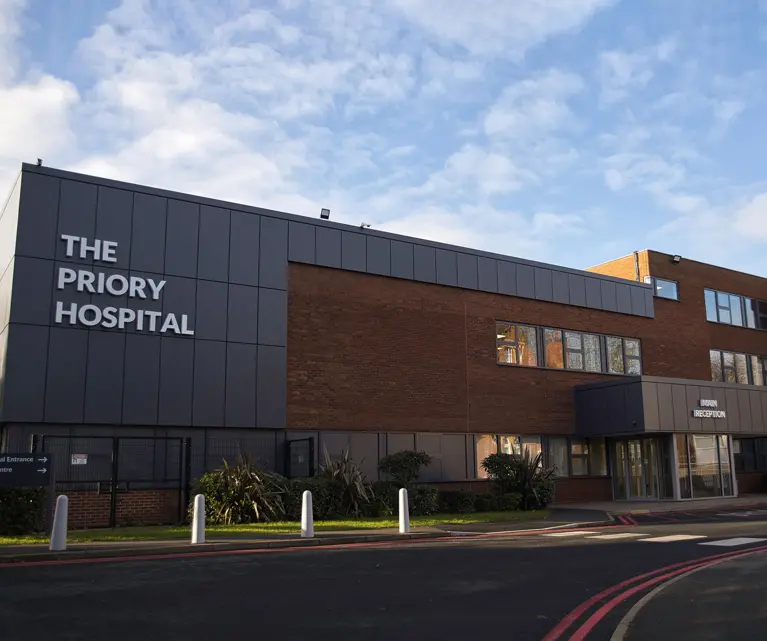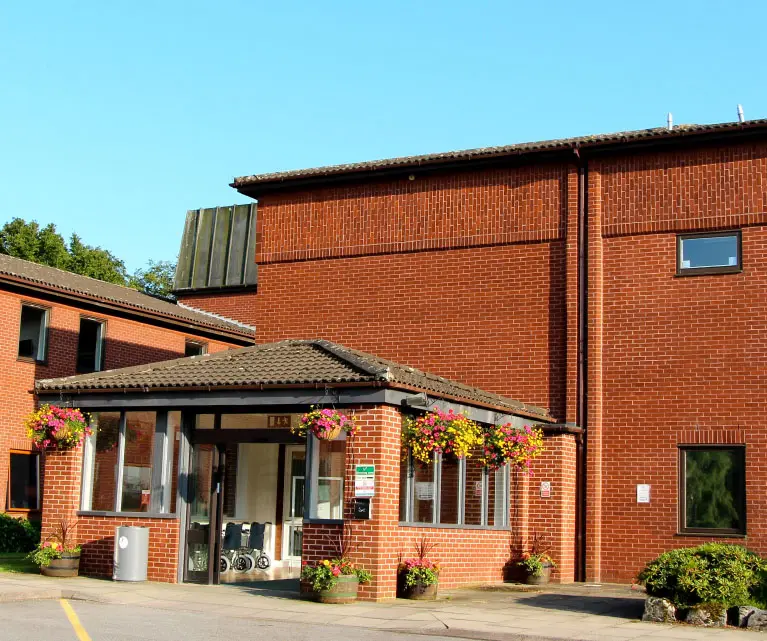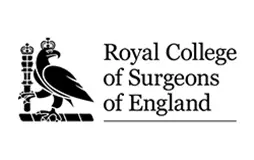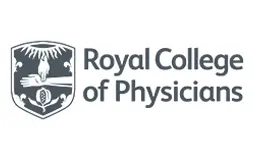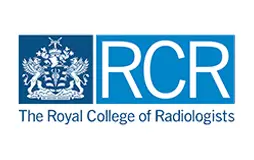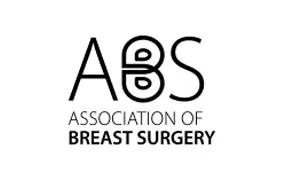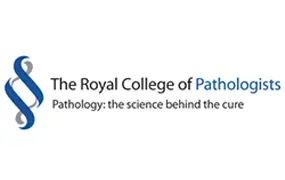The oncoplastic surgery team at BBG comprises board-certified breast cancer specialists and plastic surgeons with extensive experience in both oncological surgery and cosmetic breast reconstruction. Their multidisciplinary expertise ensures comprehensive care and optimal outcomes for patients undergoing oncoplastic surgery.
Treatments - Breast Surgery
Oncoplastic Surgery

Oncoplastic surgery at Birmingham Breast Group (BBG) integrates oncological principles with plastic surgery techniques to optimise both cancer treatment and cosmetic outcomes if you’re undergoing breast cancer surgery. This innovative approach combines the expertise of oncologic surgeons and plastic surgeons to achieve comprehensive care tailored to meet your individual needs.
At a Glance
Treatment time:
Treatment dependent
Anaesthetic:
Treatment dependent
Return to work:
Treatment dependent
Duration:
Long term results
Final results:
Breast cancer management
About This Treatment
The process begins with a thorough evaluation by Birmingham Breast Group’s multidisciplinary team of breast cancer specialists, including oncologists, surgeons, radiologists, and oncoplastic surgeons.
This collaborative approach allows for a comprehensive assessment of your condition, considering factors such as tumour characteristics, breast anatomy, and cosmetic goals.
Various techniques are used in oncoplastic surgery. The oncologic surgeon performs tumour resection, removing the cancerous tissue along with a margin of healthy surrounding tissue to ensure complete eradication of cancer cells. This aspect of the procedure is similar to traditional breast cancer surgery. Following tumour removal, the oncoplastic surgeon employs oncoplastic techniques to reconstruct the breast and optimise cosmetic outcomes. These techniques may include rearranging breast tissue, reshaping the breast contour, and restoring breast symmetry. In cases where significant breast tissue is removed, volume replacement techniques such as breast implants or autologous tissue flaps (use of your own tissue) may be used to restore breast shape and volume. This approach helps achieve a natural-looking result while preserving or enhancing breast aesthetics.
After surgery, you’ll receive comprehensive postoperative care at BBG, including pain management, wound care, and monitoring for potential complications. Close follow-up appointments allow healthcare providers to assess healing progress, address any concerns, and provide support throughout the recovery period.
Oncoplastic surgery aims to achieve the same oncological outcomes as traditional breast cancer surgery by ensuring complete removal of cancerous tissue with negative surgical margins. By integrating plastic surgery techniques, the procedure optimises tumour resection while minimising the impact on breast appearance.
One of the primary goals of oncoplastic surgery is to improve breast appearance and symmetry following cancer treatment. By combining tumour resection with cosmetic reconstruction, the procedure addresses aesthetic concerns such as breast shape, size, and contour, enhancing patient satisfaction and quality of life.
The psychological impact of oncoplastic surgery is significant, as it allows women to undergo cancer treatment without compromising their self-image and confidence. By preserving or enhancing breast aesthetics, patients like you can experience less emotional distress and maintain a positive body image throughout the treatment process.
In addition to cosmetic considerations, oncoplastic surgery aims to preserve breast function and sensation to the greatest extent possible. By utilising advanced surgical techniques and minimising tissue damage, the procedure helps maintain natural breast function and mobility for enhanced quality of life.
Oncoplastic surgery at Birmingham Breast Group represents a cutting-edge approach to breast cancer treatment that integrates oncological expertise with plastic surgery techniques. By combining tumour resection with cosmetic reconstruction, this procedure offers women like you the opportunity to undergo cancer therapy while preserving or enhancing breast aesthetics. The collaborative effort of multidisciplinary teams at BBG ensures that you receive personalised care tailored to your unique needs and preferences. With advances in surgical techniques and comprehensive postoperative support, oncoplastic surgery continues to evolve as a safe and effective treatment option for women with breast cancer, empowering you and others, to embrace life beyond cancer with confidence and resilience.

Frequently Asked Questions
Suitable candidates for oncoplastic surgery at BBG are typically women diagnosed with early to locally advanced breast cancer, especially those with larger tumours or requiring extensive tissue removal. Candidates should desire breast conservation while aiming to achieve favourable cosmetic outcomes and maintain breast function.
Common side effects of oncoplastic surgery include temporary pain, swelling, bruising, and changes in breast sensation. Some patients may experience scarring, asymmetry, or numbness. Infrequent complications may include infection, bleeding, or implant-related issues. Close monitoring and postoperative care help manage these side effects effectively.
The duration of an oncoplastic treatment course varies depending on factors such as tumour size, complexity of surgery, and postoperative recovery. Typically, the entire process, from initial evaluation to complete recovery, may span several weeks to a few months, ensuring comprehensive care and optimal outcomes.
How much does Oncoplastic Surgery cost at Birmingham Breast Group?
As each case is unique, the cost of treatment at BBG may vary depending on individual factors. We tailor our approach to meet your specific needs, ensuring that you receive personalised care and comprehensive support throughout your journey.
Initial consultation
please enquire
All consultations are conducted in strict privacy and all information is confidential.
Surgery costs from
based on consultation
Our personalised treatment plans are meticulously tailored to meet your unique needs and goals.
Related Treatments
Therapeutic Mammoplasty
View TreatmentBreast Reconstruction Autologous
View TreatmentMastectomy
View TreatmentRelated Concerns
A Lump in the Breast
View ConcernBreast Screening
View ConcernPersonalised Breast Cancer Risk
View ConcernOncoplastic Surgery
Our Specialist Team
Meet the dedicated professionals at Birmingham Breast Group – committed to excellence, compassion, and personalised care for every patient.
BSc, MBBS, MSc, MRCS (Ed), FRCS (Eng), MD, FEBS
Naren Basu
Lead Consultant Oncoplastic Breast Surgeon
BSc, BM, MRCP, FRCR, MD
Daniel Henderson
Consultant Clinical Oncologist
MBChB, PhD, FRCS (Eng)
Ms Salena Bains
Consultant Oncoplastic Breast Surgeon
Consultant Clinical oncologist
Dr James Good
PhD, FRCR
BSc, PhD, FRCP
Professor Daniel Rea
Professor of Medical Oncology
MRCP, FRCR
Dr Sara Meade
Consultant Clinical Oncologist
BSc, MBBS, MRCS, FRCR
Dr Faisal Majid
Consultant Radiologist
MSc, PhD, FRCPath
Dr Abeer Shaaban
Path Consultant Pathologist
Bsc, MBBS, MD (Pathology) FRCPath
Dr Rachna Awasthi
Path Consultant Pathologist
Dawn Larkin
Breast Care Specialist Nurse
Ruth Tracey
Macmillan Breast Health Care Assistant
Dr Nadia Alishah
Job Title Here
Qualifications Here
Gill Farrington
Breast Care Specialist Nurse

Written by a patient at BMI The Priory Hospital, 17th August 2020
Mr Henderson was kind and understanding and I felt completely at ease with him. He was well informed of my condition and explained his treatment plan to me fully. He has been very attentive in answering emails from me and I really cannot recommend him highly enough. I feel very fortunate to have been in his care.

Written by a patient at BMI The Priory Hospital, 17th August 2020
Mr Henderson was kind and understanding and I felt completely at ease with him. He was well informed of my condition and explained his treatment plan to me fully. He has been very attentive in answering emails from me and I really cannot recommend him highly enough. I feel very fortunate to have been in his care.

Written by a patient at Spire Little Aston Hospital, 1st December 2019
I have been a patient of Dr Basu since being diagnosed with Breast Cancer a few months ago. Despite the curse of my diagnosis I couldn’t have asked for a better Dr and standard of care. He and his team are super-efficient, have gone out of their way to get fast effective treatment for me and he has super-human levels of patience. During every consultation he has been ever patient, carefully listened to all my questions and concerns then taken the time to explain everything to me and provided constant reassurance. He has been accessible at all times even over weekends and the support has been broad. He looks after you as if you are family and despite having a 90 minute journey to see him at times as we wanted the fastest appointment we couldn’t ask for anything more. Our family see him as an angel not just a doctor for what he has done for us and would recommend him in less than a blink of a eye.

Written by a patient at Queen Elizabeth Hospital, 30th September 2019
I first met Naren Basu in 2016 at the Queen Elizabeth Women’s Hospital. I had been diagnosed with breast cancer. He is an exceptionally skilled man at putting people at their ease and explaining everything with great patience and candour. He is a consummate professional and really knows his stuff, especially relating to breast cancer. He is very clever, witty, and a super surgeon. He carried out a reduction to both my breasts, removing the tumours at the same time. I was fortunate indeed to have my surgery via the NHS, it would have been very expensive as a private patient but worth every penny. I felt like a million dollars after my operation. I think he is a fabulous man and so skilled on so many levels and outstanding in human kindness.

Written by a carer at Spire Little Aston Hospital, 12th June 2019
Nine days before I was due to go on an extended holiday I discovered problems in both breasts. I was lucky enough to get an appointment 3 days before travel. Mr Basu even called me on the day of the appointment to ask me to come in earlier to ensure they had time to undergo all of the tests that evening. Anyone who has had these problems will know how overwhelming it is but Mr Basu took his time to speak to me and explained all of the procedures/tests that would be carried out that evening and possible outcomes. I did have a small procedure and again everything was explained fully and felt quite safe in his hands. The follow up appointments were just as thorough and Mr Basu made sure I understood all that we discussed. If I ever found myself in this position again Mr Basu would be my first port of call.

Written by a carer at Spire Little Aston Hospital, 11th May 2020
I was diagnosed with HER2 positive breast cancer November 8th 2019 , I was then appointed Dr Henderson almost immediately to discuss my treatment plan and way forward, I must say Dr Henderson was absolutely fantastic, he has a real calming nature and really put myself and my husband at ease , plotting my treatment course from day 1 gave us a massive line of sight to work to and in with combination of the nurses at little Aston facing the biggest fight of my life became easier & easier as the week progressed, I owe Dr Henderson my life and can’t thank him enough, he’s worth is weight in gold

Written by a patient at Good Hope Hospital, 27th November 2019
I am currently under the care of Dr Daniel Henderson at Good Hope Hospital, and I couldn’t ask for better. He listens, and speaks to you in laymans terms so you understand what is going on now and in the future. He talks to you and not at you, and has a very calm and soothing manner. If you are lucky enough to be referred to him, rest assured that you are in good hands, as he gets things actioned quickly.

Written by a patient at Spire Little Aston Hospital, 1st December 2019
I have been a patient of Dr Basu since being diagnosed with Breast Cancer a few months ago. Despite the curse of my diagnosis I couldn’t have asked for a better Dr and standard of care. He and his team are super-efficient, have gone out of their way to get fast effective treatment for me and he has super-human levels of patience. During every consultation he has been ever patient, carefully listened to all my questions and concerns then taken the time to explain everything to me and provided constant reassurance. He has been accessible at all times even over weekends and the support has been broad. He looks after you as if you are family and despite having a 90 minute journey to see him at times as we wanted the fastest appointment we couldn’t ask for anything more. Our family see him as an angel not just a doctor for what he has done for us and would recommend him in less than a blink of a eye.

Written by a patient at Queen Elizabeth Hospital, 30th September 2019
I first met Naren Basu in 2016 at the Queen Elizabeth Women’s Hospital. I had been diagnosed with breast cancer. He is an exceptionally skilled man at putting people at their ease and explaining everything with great patience and candour. He is a consummate professional and really knows his stuff, especially relating to breast cancer. He is very clever, witty, and a super surgeon. He carried out a reduction to both my breasts, removing the tumours at the same time. I was fortunate indeed to have my surgery via the NHS, it would have been very expensive as a private patient but worth every penny. I felt like a million dollars after my operation. I think he is a fabulous man and so skilled on so many levels and outstanding in human kindness.

Written by a carer at Spire Little Aston Hospital, 12th June 2019
Nine days before I was due to go on an extended holiday I discovered problems in both breasts. I was lucky enough to get an appointment 3 days before travel. Mr Basu even called me on the day of the appointment to ask me to come in earlier to ensure they had time to undergo all of the tests that evening. Anyone who has had these problems will know how overwhelming it is but Mr Basu took his time to speak to me and explained all of the procedures/tests that would be carried out that evening and possible outcomes. I did have a small procedure and again everything was explained fully and felt quite safe in his hands. The follow up appointments were just as thorough and Mr Basu made sure I understood all that we discussed. If I ever found myself in this position again Mr Basu would be my first port of call.

Written by a carer at Spire Little Aston Hospital, 11th May 2020
I was diagnosed with HER2 positive breast cancer November 8th 2019 , I was then appointed Dr Henderson almost immediately to discuss my treatment plan and way forward, I must say Dr Henderson was absolutely fantastic, he has a real calming nature and really put myself and my husband at ease , plotting my treatment course from day 1 gave us a massive line of sight to work to and in with combination of the nurses at little Aston facing the biggest fight of my life became easier & easier as the week progressed, I owe Dr Henderson my life and can’t thank him enough, he’s worth is weight in gold

Written by a patient at Good Hope Hospital, 27th November 2019
I am currently under the care of Dr Daniel Henderson at Good Hope Hospital, and I couldn’t ask for better. He listens, and speaks to you in laymans terms so you understand what is going on now and in the future. He talks to you and not at you, and has a very calm and soothing manner. If you are lucky enough to be referred to him, rest assured that you are in good hands, as he gets things actioned quickly.

Written by a patient at BMI The Priory Hospital, 17th August 2020
Mr Henderson was kind and understanding and I felt completely at ease with him. He was well informed of my condition and explained his treatment plan to me fully. He has been very attentive in answering emails from me and I really cannot recommend him highly enough. I feel very fortunate to have been in his care.
KEEPING YOU UP TO DATE
Insights
View insights from our doctors and industry experts on a range of topics, along with tips and advice to keep you safe.
